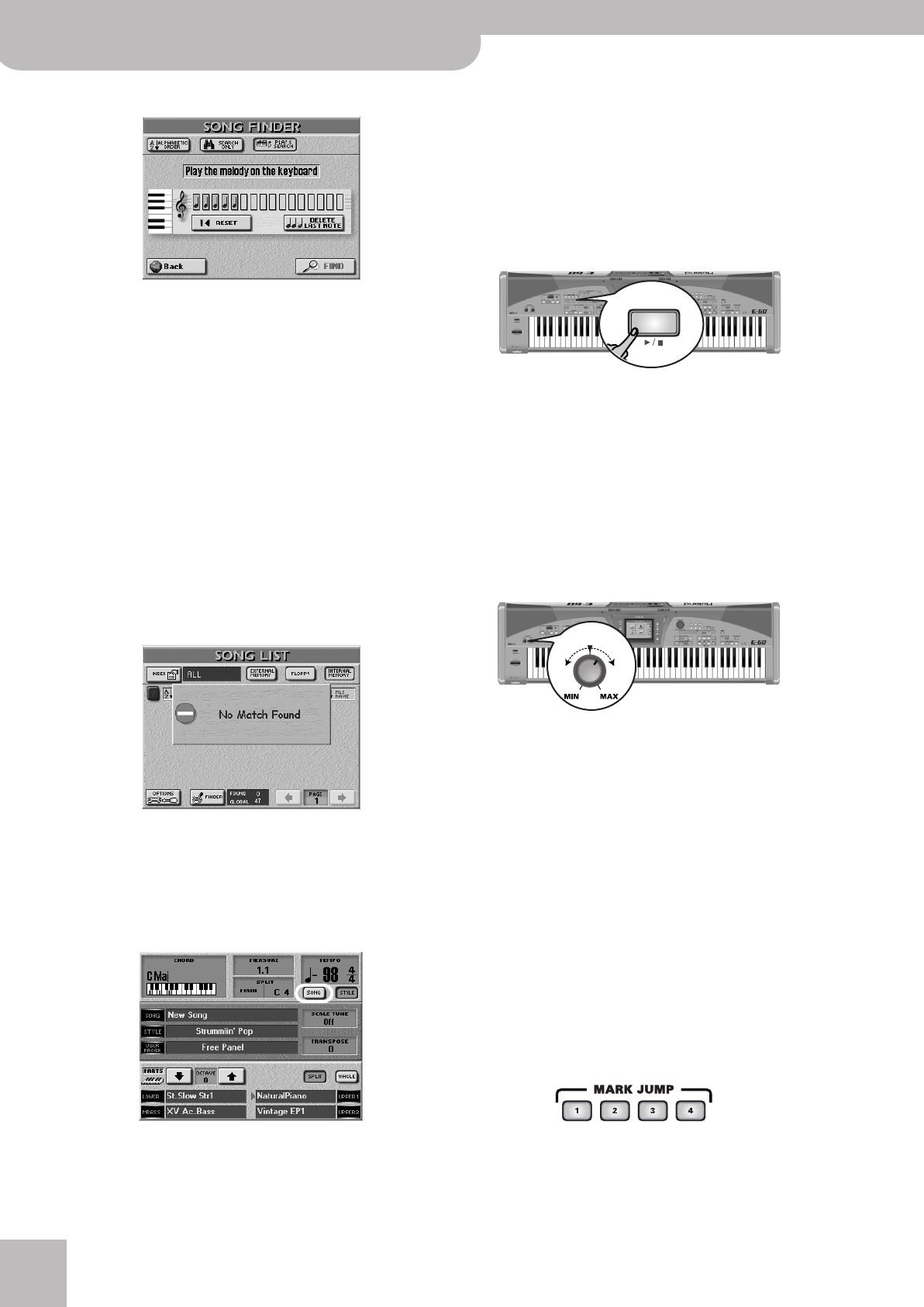
Quick Start
36
r
E-60/E-50 Music Workstation
• Press the [PLAY&SEARCH] field.
• As indicated in the display, play the main theme on
the keyboard. You can play in any key and the rhythm
doesn’t have to be perfect either (this function just
looks for intervals).
• If you played a wrong note, press
[DELETE≈LAST¥NOTE].
• To enter the entire line again, press [∫≈RESET] to erase
the previously entered notes, then play the phrase
again.
• After entering the melody, press the [FIND] field.
The display now returns to step (1) on page 35 and
shows the names of the songs that contain the mel-
ody you played.
• Press the field of the song you want to play back.
Note: If no songs were found, the following message appears
and no file names are displayed (in which case you need to
press the [SONG¥NAME], [ARTIST], [GENRE] or [FILE¥NAME] field
to display all songs again):
If the E-60/E-50 did find one or several matches, the
“FOUND” number will be smaller than the “GLOBAL”
number.
Starting playback
(7) To return to the main page, press [EXIT].
The “main page” is the E-60/E-50’s display page that
provides a maximum of relevant information and
allows you to select (and change) items you may
need during normal operation.
It also displays the name of the selected song, the
tempo and the current measure. You can press the
[SONG] button icon in the upper right-hand corner to
see the song’s tempo. (This value is automatically dis-
played when you start song playback.)
Note: If the message “Too many events” is displayed, the
selected song contains more data than can be handled and is
therefore not played back.
(8) Press the [PLAY÷STOP¥®÷ª] button.
Playback of the selected song starts.
Note: See “Song/Arranger Start Priority” on p. 196 if playback
does not start.
(9) If necessary, use [√¥SLOW] and [FAST¥®] to change
the tempo.
You can also press the [TAP] button several times in
the rhythm of the desired tempo.
To quickly return to the default tempo, simulta-
neously press [√¥SLOW] and [FAST¥®].
(10) Use the MASTER [VOLUME] knob to set the E-60/
E-50’s output volume.
You can also play to the music using the Keyboard
parts. If necessary, use the [BALANCE] knob to set the
desired balance.
Other practical playback functions
■MARK JUMP
The factory-loaded songs in the E-60/E-50’s internal
memory contain four locations (“markers”) you can
jump to right away. For songs that do not yet contain
them, you can program these markers yourself. You
can also edit the locations of existing markers
(page 109).
• Use the MARK JUMP [1]~[4] buttons to select the
position you want to jump to without stopping or
delaying playback (the indicator of the button you
pressed flashes). Such changes occur at the end of
the current measure (the indicator stops flashing and
lights), which makes more musical sense than jump-
ing when you’re halfway into a measure.
There are four MARK memories. For the factory-
loaded songs, they correspond to:
1= verse, 2= chorus, 3= bridge, 4= ending
PLAY
STOP
MAS
VOLUME
E-60_50_OM_UK.book Page 36 Thursday, June 22, 2006 10:06 AM


















